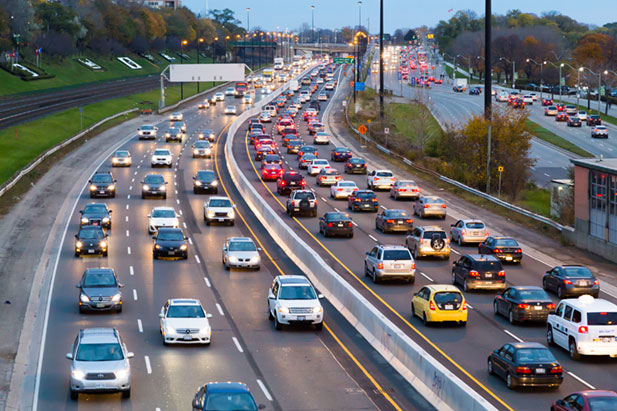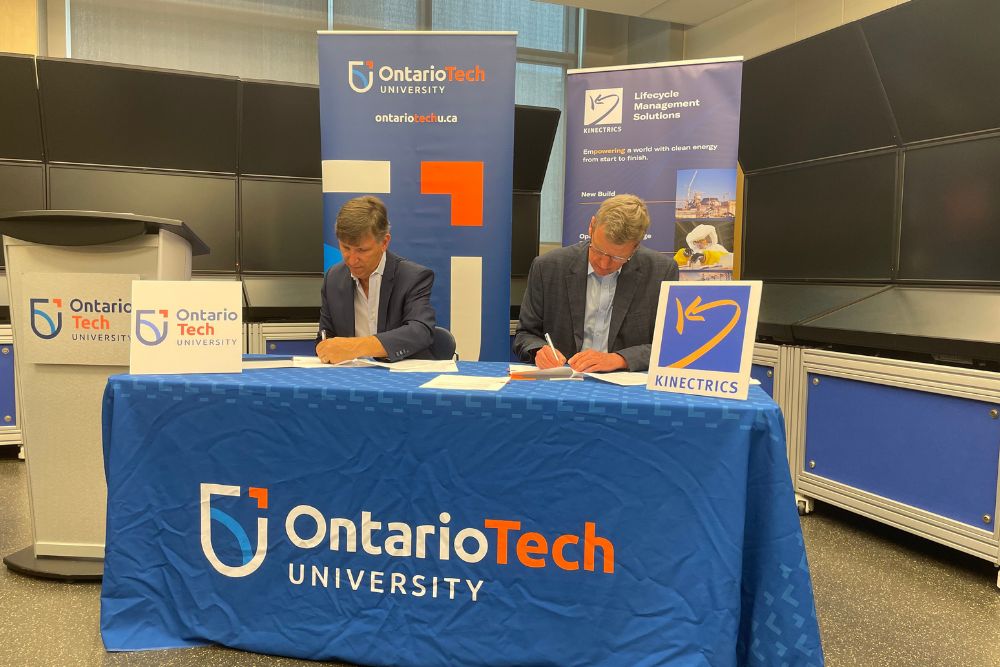Researcher says there’s a long-term price to pay for avoiding GTA highway tolls
Dr. Dan Hoornweg says the GTA can’t afford the status quo
January 30, 2017

Commentary by Dan Hoornweg, PhD, Marceau Research Chair in Natural Gas as a Transportation Fuel, and Associate Professor, Faculty of Energy Systems and Nuclear Science.
In late January, the Bulletin of Atomic Scientists moved the ‘Doomsday Clock’ 30 seconds closer to midnight (The Atlantic, January 26, 2017)1. Since 1947, the Bulletin’s scientists and security experts annually update the Doomsday Clock. The clock is a symbolic warning about how close the world stands to ‘midnight’, that is, nuclear or existential catastrophe. The clock now stands at two-and-a-half minutes to midnight, suggesting that the risks we now face are the most serious since the height of the Cold War in 1953. The group attributed the severity of the threat to one key risk, climate change.
Planetary doomsday is a hard concept to grasp. What impact can one person or even one community have on something as complex as planetary destruction? A better approach might be to estimate where our hometown stands relative to local and global catastrophe. If the Toronto Urban Region (GTHA) had a similar Doomsday Clock, it would have likely moved a full one-second closer to midnight last week. This is the impact associated with saying no to tolls on key roads.
Saying no to tolls on GTA roads such as the Gardiner Expressway and Don Valley Parkway may seem like just another political trade-off, but the underlying reasons for the polarization on tolls are troubling.
The biggest threat to Ontario’s prosperity is the long-standing divide between the City of Toronto (telephone area code 416) and the suburbs (area code 905). The Toronto urban region (GTHA-plus) is made up of 80 federal ridings and 66 provincial ridings, along with 57 local mayors and chairs; and one Premier. The area makes up about 80 per cent of Ontario’s economy (40 per cent of Canada’s). The continued prosperity of Canada, and the GTHA, relies more on the health of Toronto than any other input, and this reliance is increasing. Yet, the political opposition in the 905-region was severe2.
Outside Canada, people see one Toronto (urban region) stretching from Waterloo to Peterborough, up to Barrie and down to Niagara Falls. This is the region’s biggest strength. The biggest complaint of visitors to the region is usually traffic congestion.
Social tectonics threaten every big urban area. Communities are fractious and parochial everywhere; easier to blame your neighbour some distance away rather than the one next door—or ourselves. Toronto is no different. However, on January 26 the acrimony intensified. After the decision to block the tolls, a City of Toronto councillor said the TTC subway extension to York Region is unfair to Toronto residents as riders coming from the north will get seats first each morning (while they pay no property taxes for the TTC).
In the 905-region, a chair and mayor were quoted saying the tolls represented an unfair cash grab and their demise was “great news.” However, their region pays the area’s highest price for congestion. Conversely, their housing values increased faster and the economy is stronger than almost anywhere else in Canada, thanks in large-part to their proximity to the City of Toronto.
If you take away the arbitrary borders between 416 and 905 and contemplate who benefits from stronger transit and better roads, it becomes obvious the answer is: all of us. With that in mind, it is easier to have a rational discussion about the best way to invest in forward-looking infrastructure that allows us to be globally competitive, as a region.
Why tolls?
Congestion pricing, i.e. dynamic tolls, and preferential road sharing, such as the HOV lanes piloted during the 2015 PanAm/ParaPanAm Games, are some of the most powerful tools to reducing congestion and pollution. Transportation emissions in the GTHA are the largest source of greenhouse gas emissions, particulates and ozone (leading to smog and respiratory problems). Hundreds of reports calling for improvement to Toronto’s traffic challenges and air quality have called for tolls.
It is not just a way to pay for infrastructure, it is a way to shape behaviour and move us to a system that will allow us to achieve world-class standards as a city-region instead of remaining with status quo, bumper-to-bumper lost productivity along the Highway 401 and Don Valley Parkway.
The Ontario Trucking Association, which supported scrapping the tolls may actually have the most to gain from them. The cost of tolls would probably be less than the amount in fuel costs they pay now due to the congestion. And, this is before you consider the disproportionately high costs we all pay for excess emissions, road damage and the safety impact of trucks in the current conditions.
One can understand the dilemma for politicians. Intuitively, they may find it hard to see the value of yet another tax on their constituents. This is a valid emotional response, which unfortunately is not supported by science and economics.
When we feel we pay too much, or have no voice, it feels like the right thing to defend our home turf. There has always been a rift between the ‘905’ and ‘416,’ but we are not Republican and Democrat, or Liberal and Conservative. We need to stop polarizing our community by the area codes we live in.
A journey of 10,000 miles begins with a single step and in Toronto, that journey is more congested than anywhere else in Canada. Everyone feels hard-done-by and wants to pay less. The suburban commuter stuck in gridlock, the city-core resident facing yet another parking ticket, subway delay, or paying for highway infrastructure many don’t even use. Technology will not get us out of this mess. Co-operation and social cohesion is needed along with a strong understanding of what we need to do to compete, not with each other, but globally.
A planetary Doomsday Clock may seem so far away. It represents such an enormous challenge that it’s hard to see how we, here in the GTHA, can have an influence. Improving traffic and reducing emissions in the Toronto Urban Region is the single biggest thing we can do to help the planet and ourselves. We need to work together because a globally-competitive urban area from Hamilton to Clarington helps us all prosper.
[1] https://www.theatlantic.com/science/archive/2017/01/the-doomsday-clocks-new-and-dire-warning/514544/
[2] Perhaps not surprising as people are used to paying $30 for use of the 407ETR (and much of that money leaves Canada), however Toronto residents would have paid a greater share of the toll than those from the suburbs.




